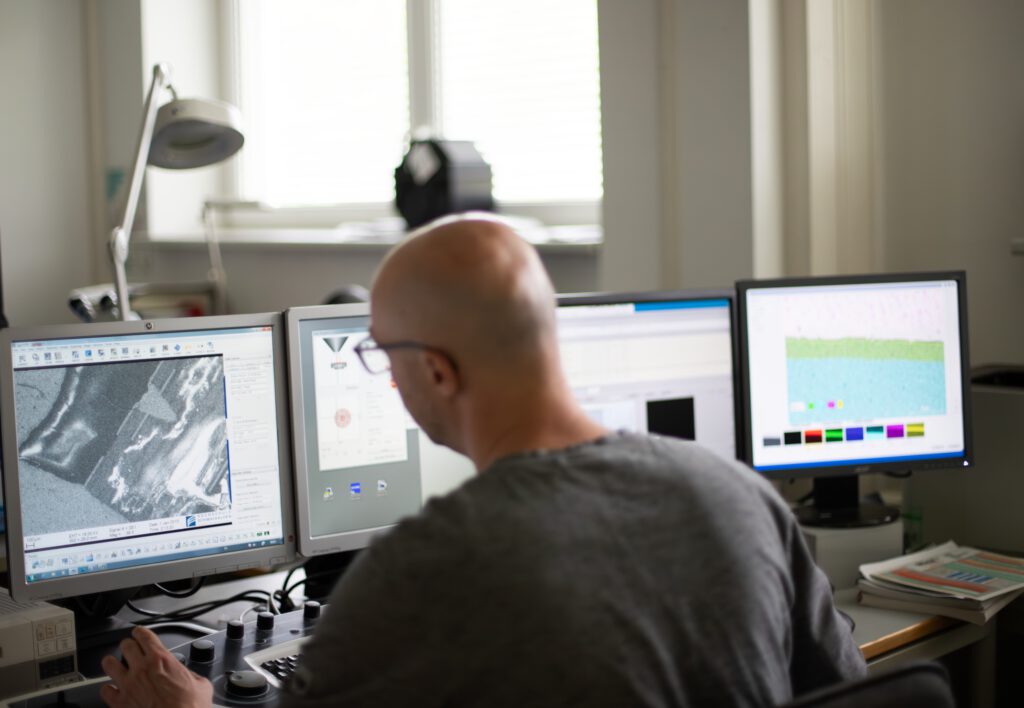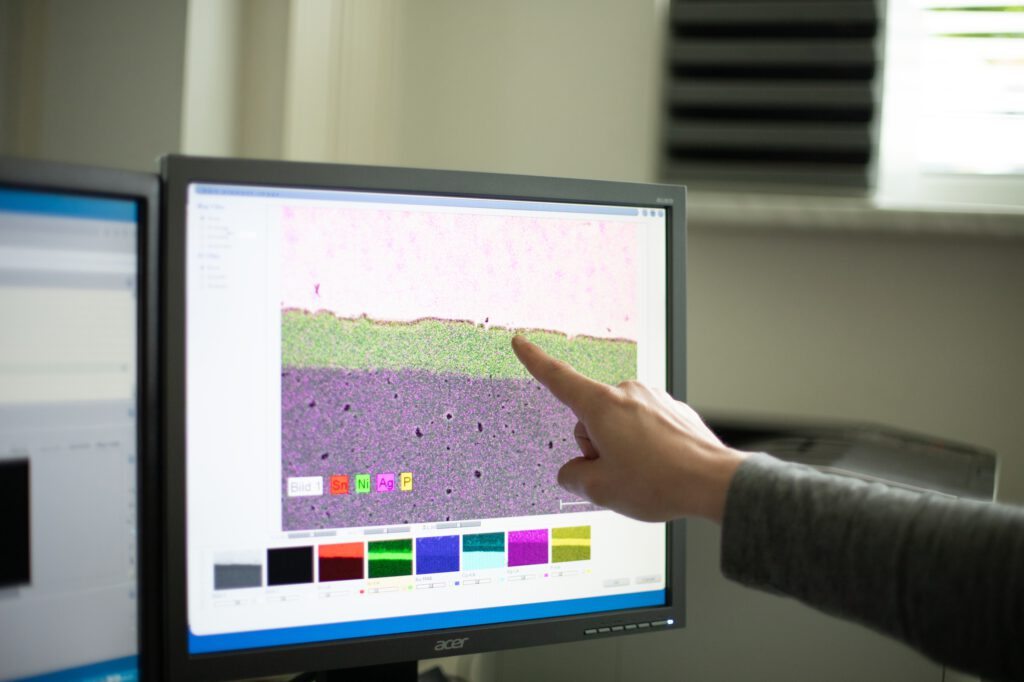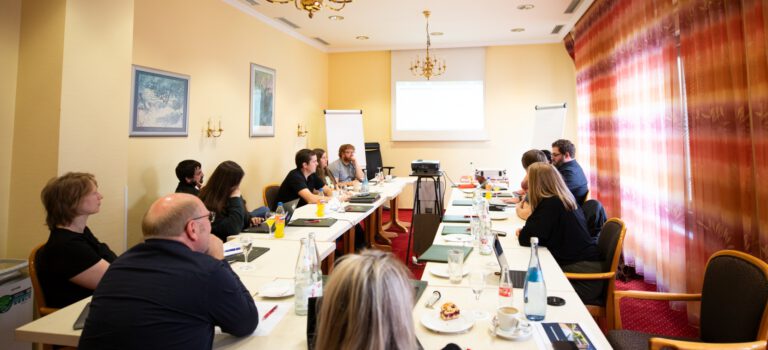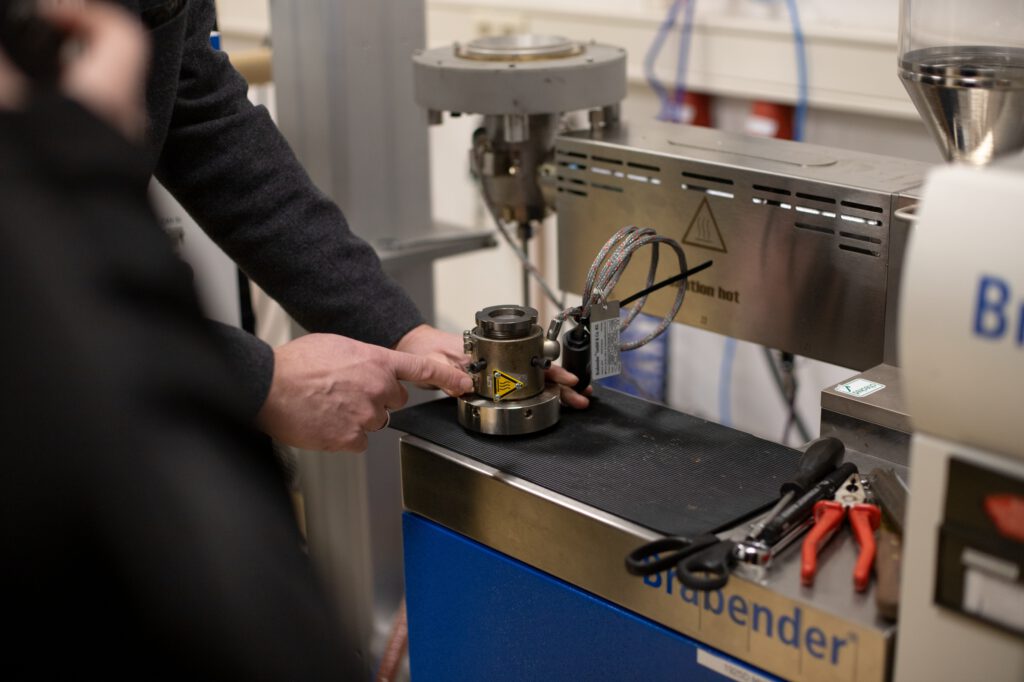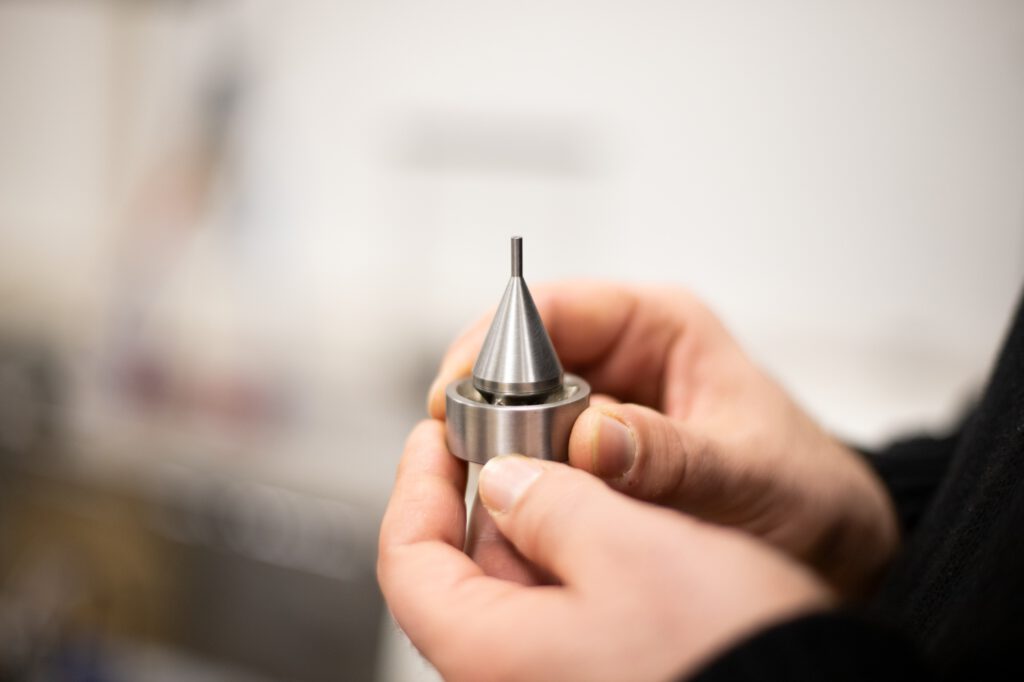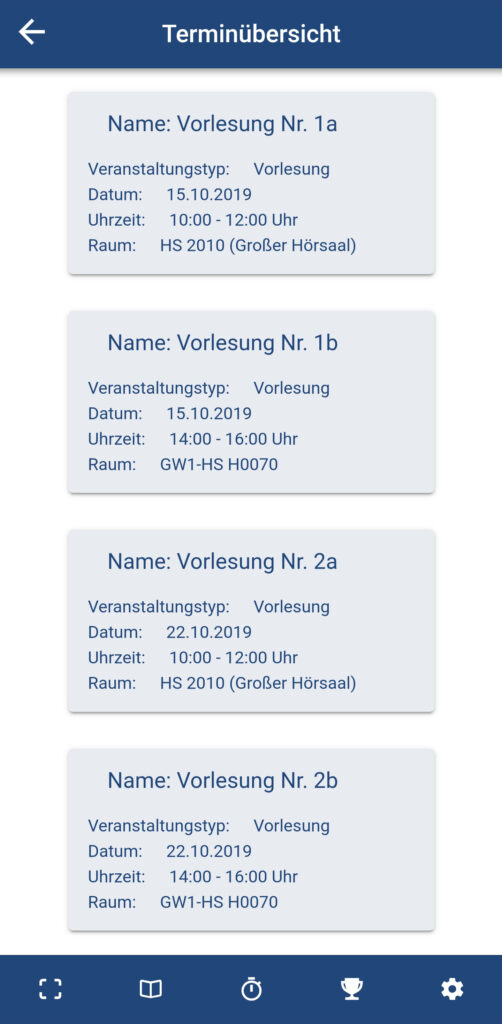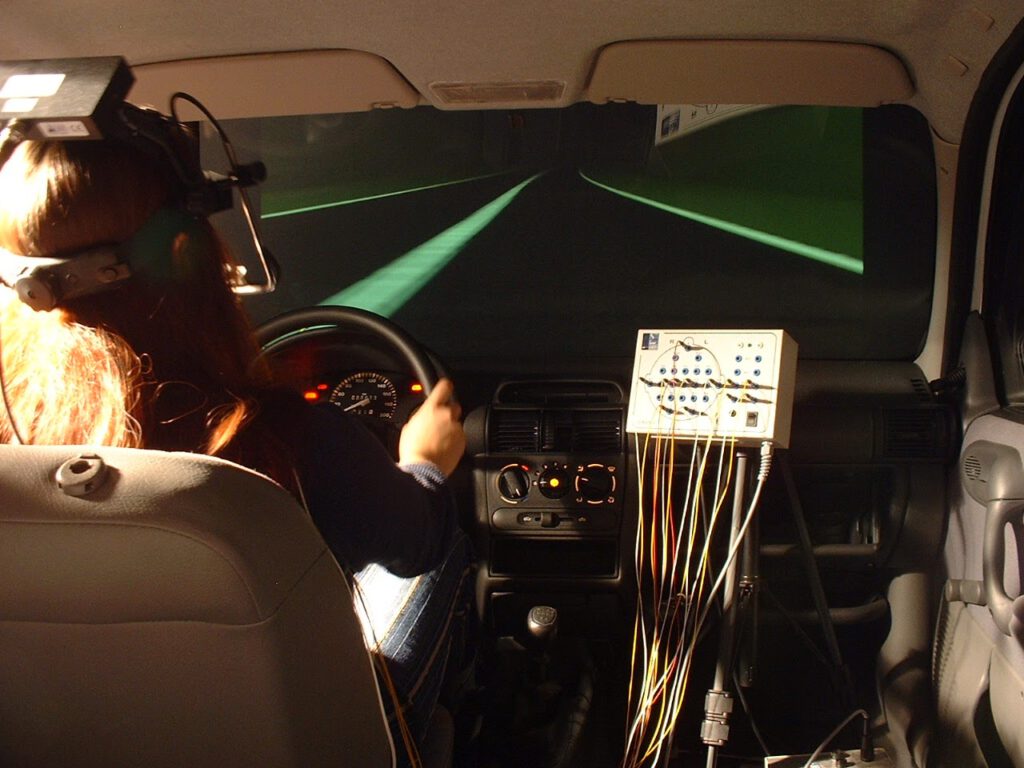Although the massive disruptions to everyday life have noticeably decreased, the individual and societal burdens resulting from the coronavirus pandemic are still palpable. Post-COVID syndrome is now recognized as a clinical condition, and improving diagnosis, prevention, and treatment are driving medical research. Professor Thomas Urban, in collaboration with the Post-COVID Center in Senftenberg, developed a specific therapy concept for post-COVID-19 patients and presented his approaches, methodology, and some results in a report on his past research semester, which are also central topics of his second habilitation thesis.
Applied science in the medical field had already distinguished itself at the beginning of the pandemic through the immensely rapid development and provision of various effective vaccines and their continuous adaptation to different variants. Without these achievements in research and production by pharmaceutical institutions and companies, the consequences of COVID-19 would certainly have been far more drastic and protracted. The response to the pandemic highlights the innovative potential of application-oriented medical research and health tech, which combines state-of-the-art technologies with a focus on the physical and mental well-being of patients.
Research in progress
However, research in this area is by no means complete: on the one hand, there are always new variants of the virus and thus the need to adapt vaccines to continue to effectively protect vulnerable groups. On the other hand, medical development must address the physical and psychological effects of the pandemic. As with the development of vaccines, the novelty of the pathogen poses challenges for research, as the first step must be to understand the clinical picture itself and characterize its various manifestations. This foundation can then be followed by considerations of therapeutic measures.
Post-COVID syndrome is now a recognized clinical picture and is receiving widespread public attention, precisely because the long-term effects of COVID-19 affect quite a few people and burden them in their everyday lives. Even though the two phenomena are colloquially used synonymously, long COVID refers to persistent impairments lasting more than four weeks up to three months after infection, and post-COVID refers to the subsequent period.[1]
Similar to other infectious diseases, a coronavirus infection (SARS-CoV-2) can result in a variety of long-term effects that can impair organ systems such as the heart, lungs, brain, and other organs over a longer period of time. Long-term here refers to persistent symptoms twelve weeks after the actual infection, with the frequency of occurrence varying between 10% and 20%. The causative factors currently under discussion are overactivation of the immune system and thrombus formation in the microvascular system.[2] The consequences for humans are wide-ranging, from exhaustion (fatigue[3] ) to cardiovascular problems and balance disorders to nerve damage and persistent pain. This variance suggests the complexity of the syndrome, both in terms of its medical description and causal localization on the one hand, and therapeutic approaches on the other, whereby various disciplines of medicine must cooperate. In addition to alleviating symptoms, the goal of therapy is to prevent the condition from becoming chronic and to enable those affected to participate in their private and professional lives.
The blended therapy approach
An innovative therapeutic approach is suitable for this multidisciplinary approach, which Professor Urban analyzed during his research semester and was also able to empirically investigate at a coronavirus therapy center. The chosen approach is called blended therapy and combines classic analog and digital forms of therapy. The digital supplement enables more flexible treatment that is less restricted in terms of space and time, allowing for continuous therapeutic forms and individual implementation of medical recommendations. For example, mobile apps and smart watches allow automated, close (self-)monitoring, while special monitor camera systems allow exercises to be monitored at home and controlled in real time. Research into these therapeutic approaches is also necessary because there are currently few specific cross-sectoral concepts and, to date, no therapeutic approach for post-COVID has been recommended as standard that addresses the causes of the condition, as opposed to approaches focused on symptom relief, and that has been tested according to empirical criteria.

Based on the S2k guidelines of the German Society of Neurology and the LMU’s post-COVID care concept, a therapy was developed that takes into account the specific needs of post-COVID patients on the one hand, but on the other hand places a certain amount of strain on patients. This was rather unusual in previous post-corona therapies.[4] One consequence of the impaired energy balance is possible spontaneous collapses (post-exertional malaise), which patients could not foresee and which set back the convalescence process immensely. [5]At the same time, therapy methods that use forms of stress and avoid overexertion through controlled conditions have proven to be quite successful. Individualized energy management and the minimization of overload were important factors in the therapeutic approaches.
Blended therapy combines traditional in-person treatment with digital intervention tools, offering the possibility of real-time analysis of stress, performance, and energy expenditure in patients during exercises (including at home). Instead of comprehensive rest, sensorimotor limitations and fatigue were addressed with balance training and motor exercise therapies. Subsequently, cognitive behavioral therapy designed for fatigue was implemented, which also focused on secondary psychosomatic symptoms and the assessment of the subjective effectiveness of the training therapy.
Study and evaluation
The accompanying study took place over a three-year period at the Corona Therapy Center Lausitz (Senftenberg). In addition to changes in the main symptoms, general effects on physical and mental health as well as secondary effects had to be taken into account. The study included 407 patients who met certain criteria. The training sessions took place both in person and at the patients’ homes, which allowed the required exercise intensity to be achieved. The second phase was accompanied by a survey study to gain important insights into the benefits of therapeutic measures in the context of healthcare.

The evaluation of the therapy was based on two criteria: the main post-COVID symptoms and the motor fatigability parameters, the latter providing an indicator of mobility. In general, positive effects were observed in terms of both the main symptoms and the motor and cognitive fatigability parameters.[6] In the end, positive therapeutic effects were detected, as was the benefit of the blended therapy approach, which can also be integrated into the existing healthcare system. Not least, the therapy enabled those affected to learn to cope with their reduced energy levels while making effective use of their remaining capacities. This is an important first step in offering patients the chance to actively participate in social or professional life again.
Professor Urban submitted his postdoctoral thesis entitled “Sektorenübergreifende beanspruchungsgesteuerte multimodale Blended Therapy für Post-COVID-19-Patienten mit Fatigue und sensomotorischer Instabilität” to the Department of Healthcare Science at the Institute for Medical Technology at the Brandenburg University of Technology Cottbus-Senftenberg.
[1] See Urban 2025, Sektorenübergreifende beanspruchungsgesteuerte multimodale Blended Therapy für Post-COVID-19-Patienten mit Fatigue und sensomotorischer Instabilität, pp. 10–24, (manuscript) and https://www.kvberlin.de/fuer-praxen/aktuelles/themen/thema/long-covid.
[2] See Urban, Thomas et al., Fatigue und sensomotorische Instabilität. Neurologisch kontrollierte Konversion von Post-COVID-19-Patienten, in: Nervenarzt (2024:95, pp. 1104–1115), p. 1107
[3] “Fatigue is characterized by physical (especially motor), cognitive, and/or mental exhaustion that is often subjectively severely limiting, disproportionate to the preceding exertion, and cannot be alleviated by sleep.” (See ibid., p. 1106) Another characteristic is the unpredictable onset of exhaustion, which in turn affects the individual’s energy balance.
[4] In cases of energy depletion, fatigue, and similar conditions, it was generally recommended that those affected take it easy.
[5] The stress reactions can in turn be somatic, cognitive, and also emotional in nature. One problem in avoiding crashes is that there is no proportionality between actual stress and the triggering of breakdowns. Technical possibilities allow stress to be controlled in real time, which in turn helps to avoid breakdowns. (See ibid., p. 1110)
[6] Without going into the details of the evaluation here, it is important to point out a problem that highlights the challenges of therapeutic approaches. Women experienced a worsening of secondary psychosomatic symptoms: one explanation for this is the faster course of therapy in men and the resulting longer stress in women, overconfidence, and evasive behavior, especially in young women. Therapies must understand these particularities and take them into account in their treatments in order not to jeopardize other successes.


